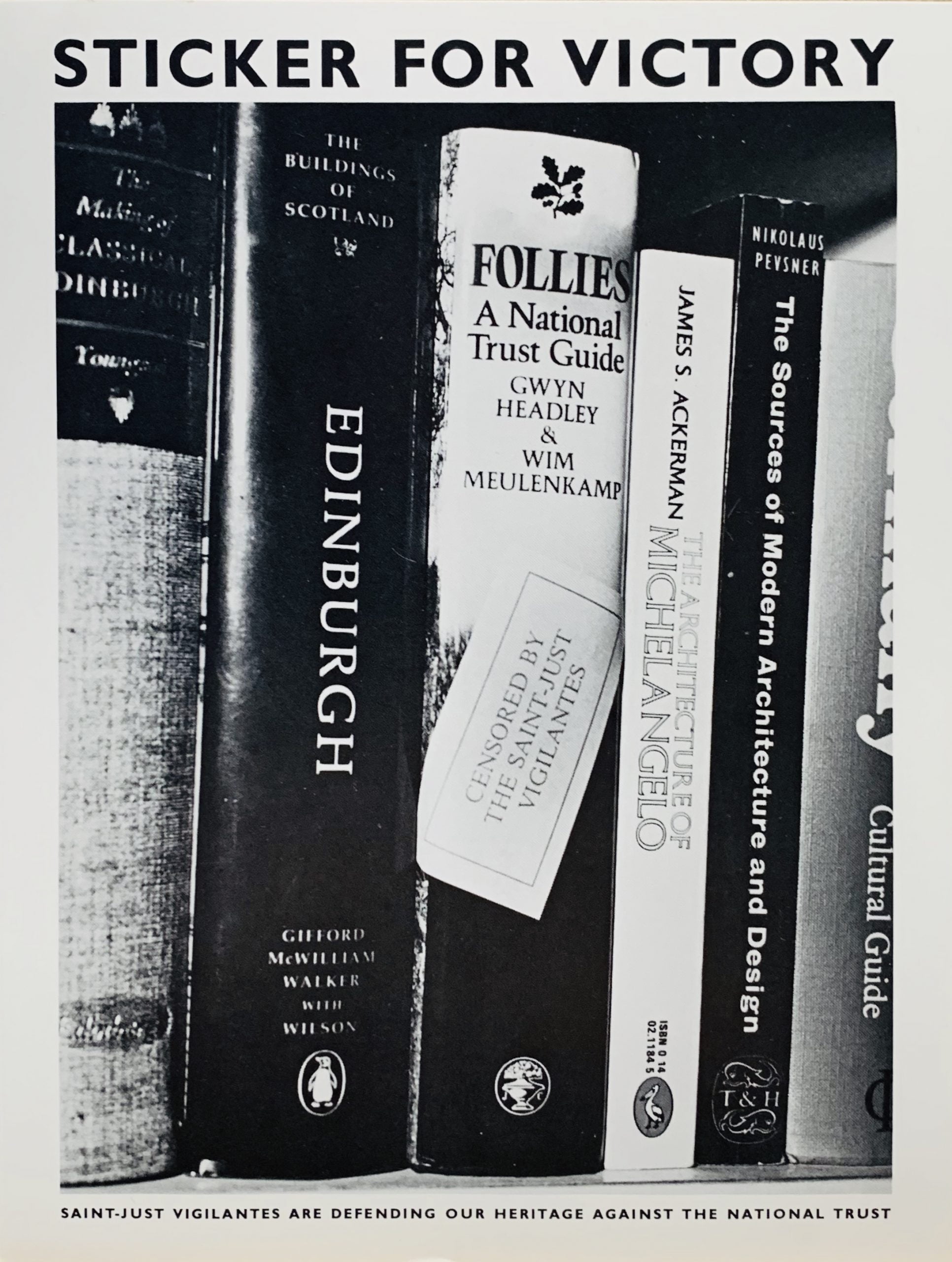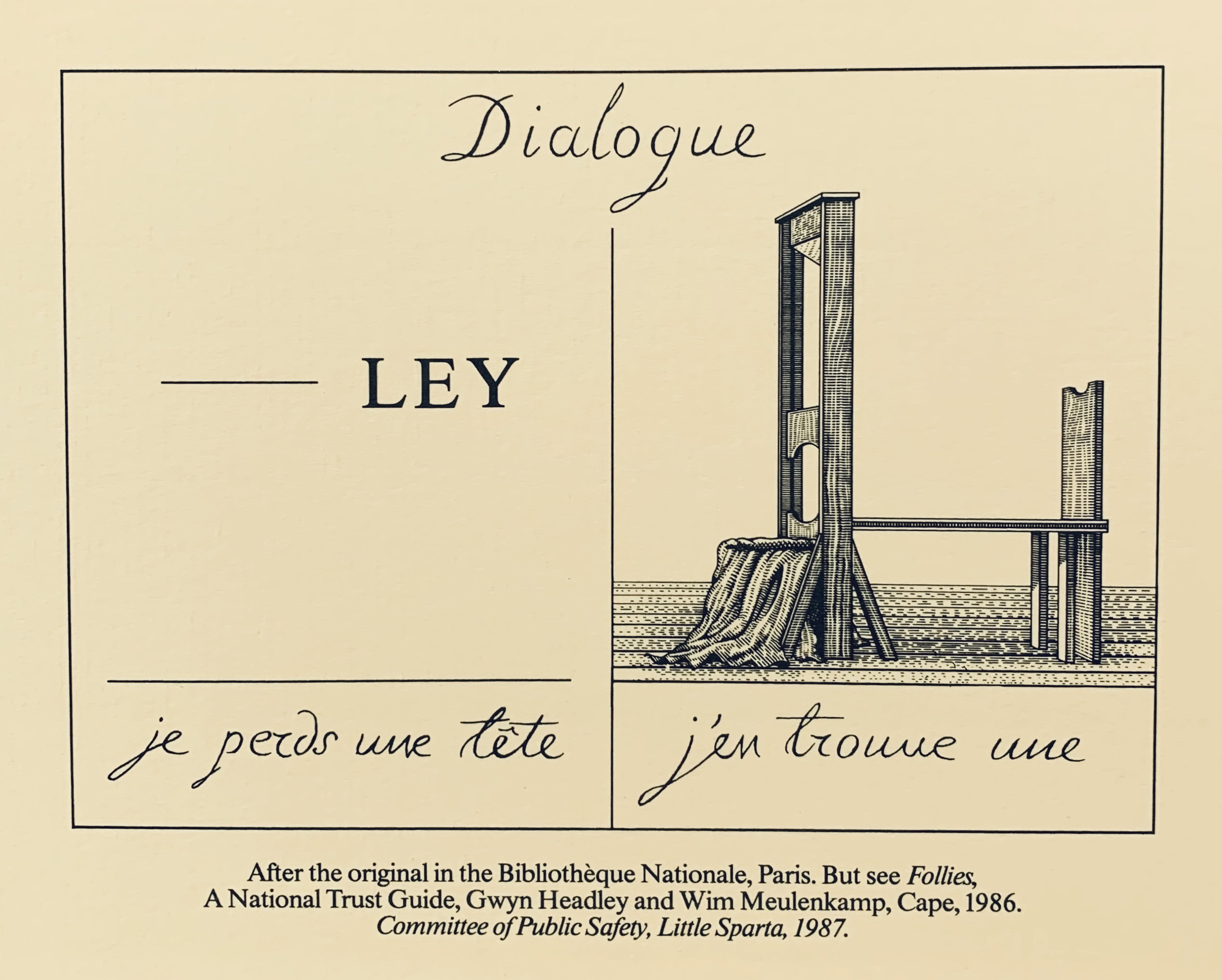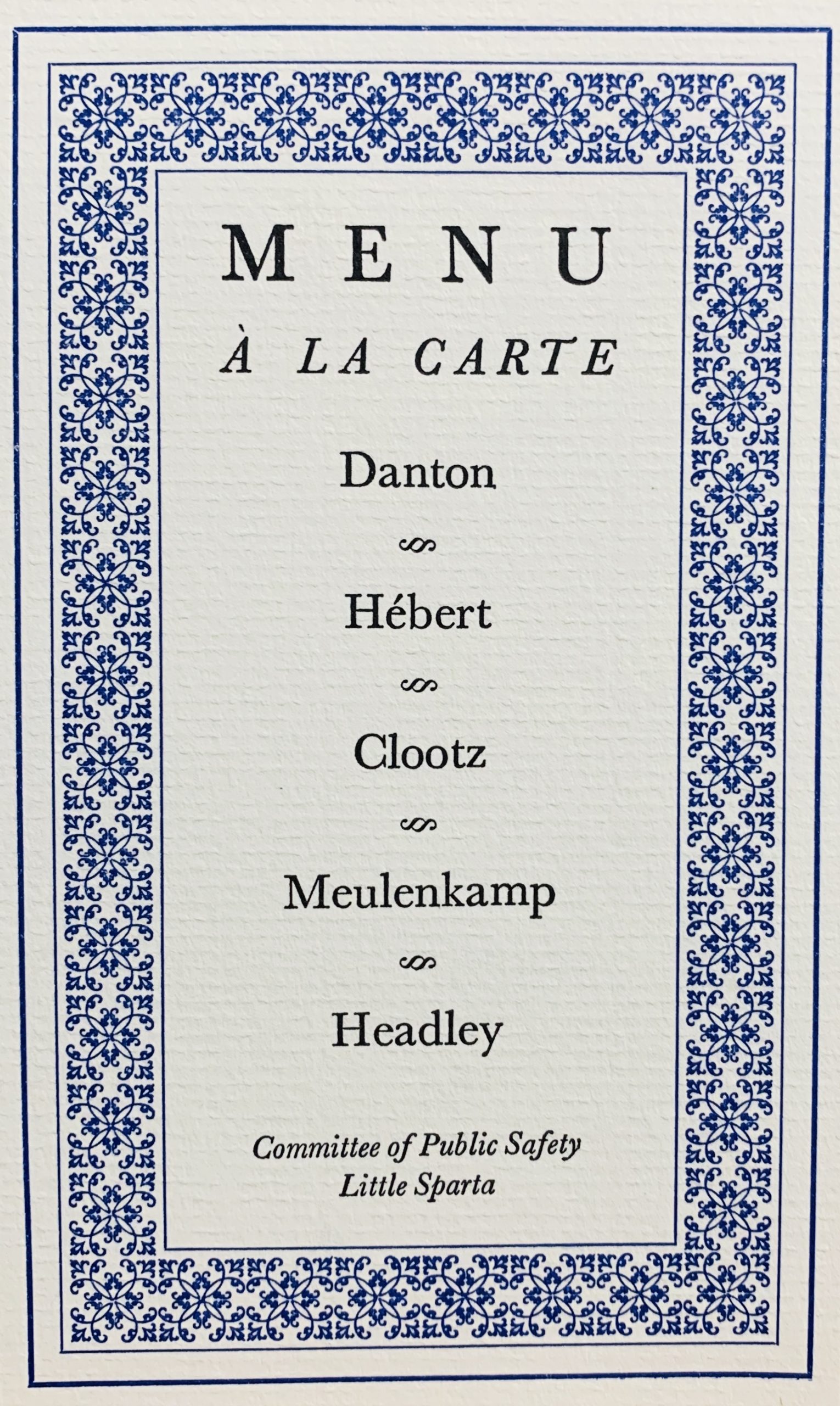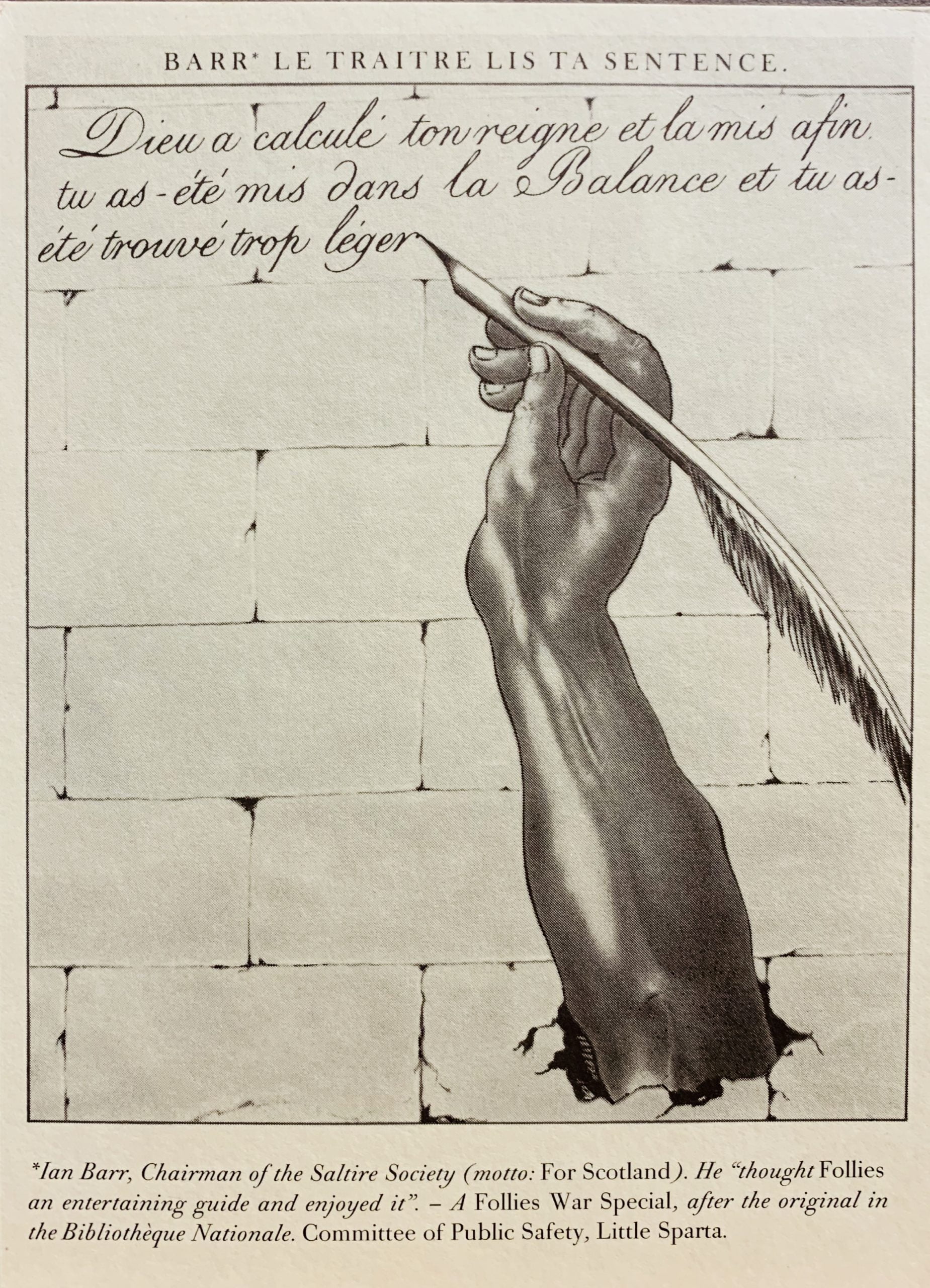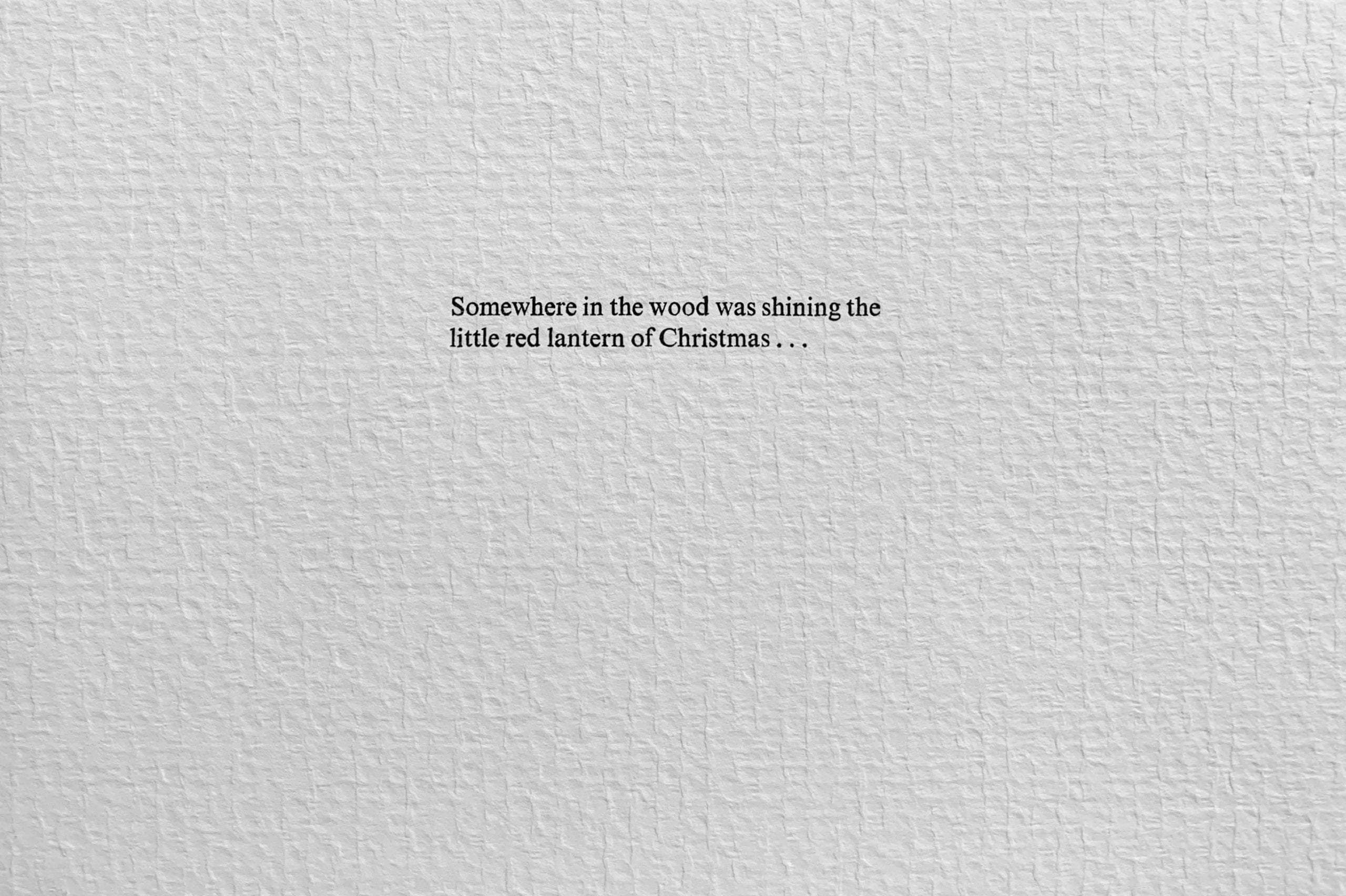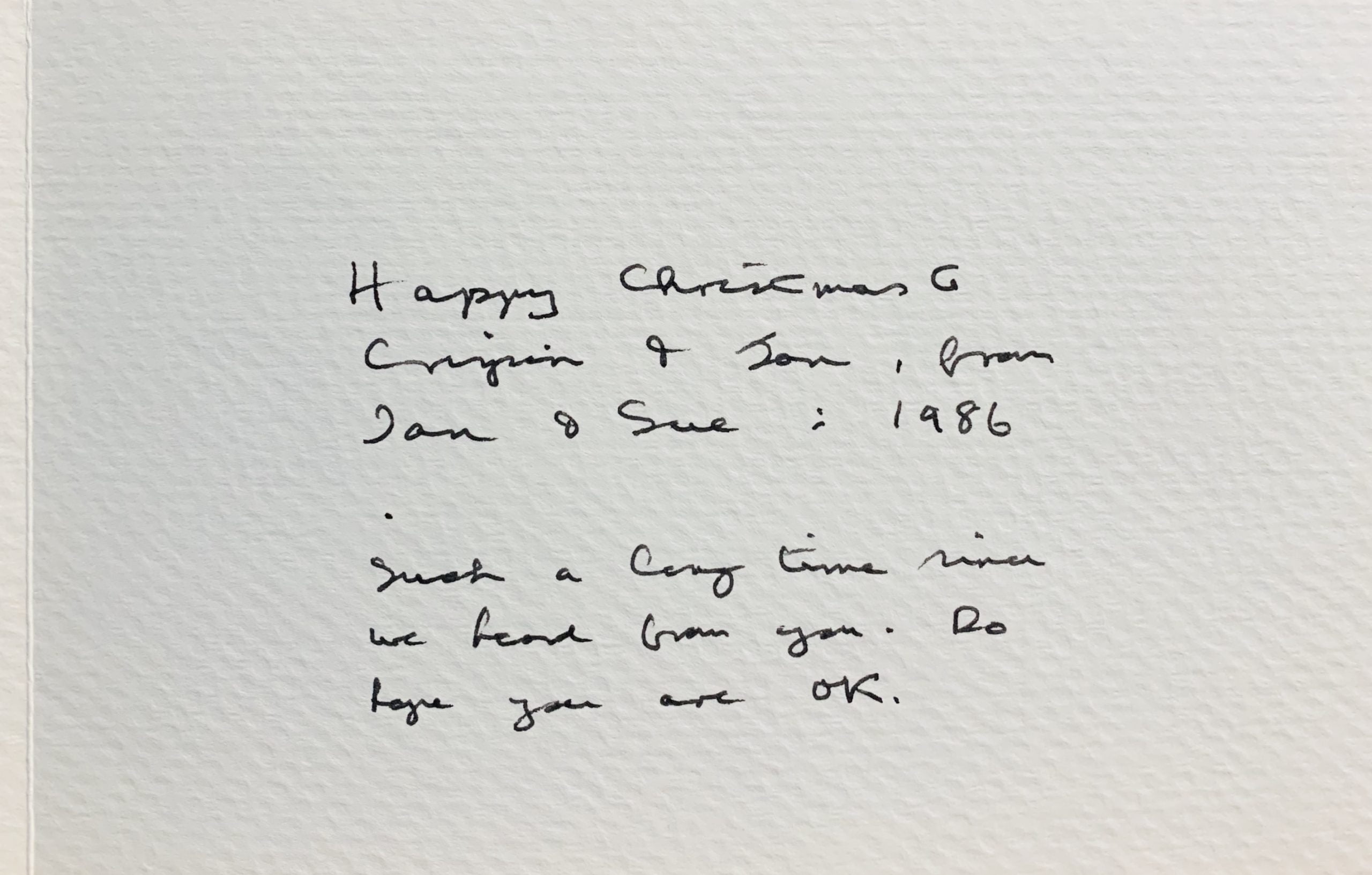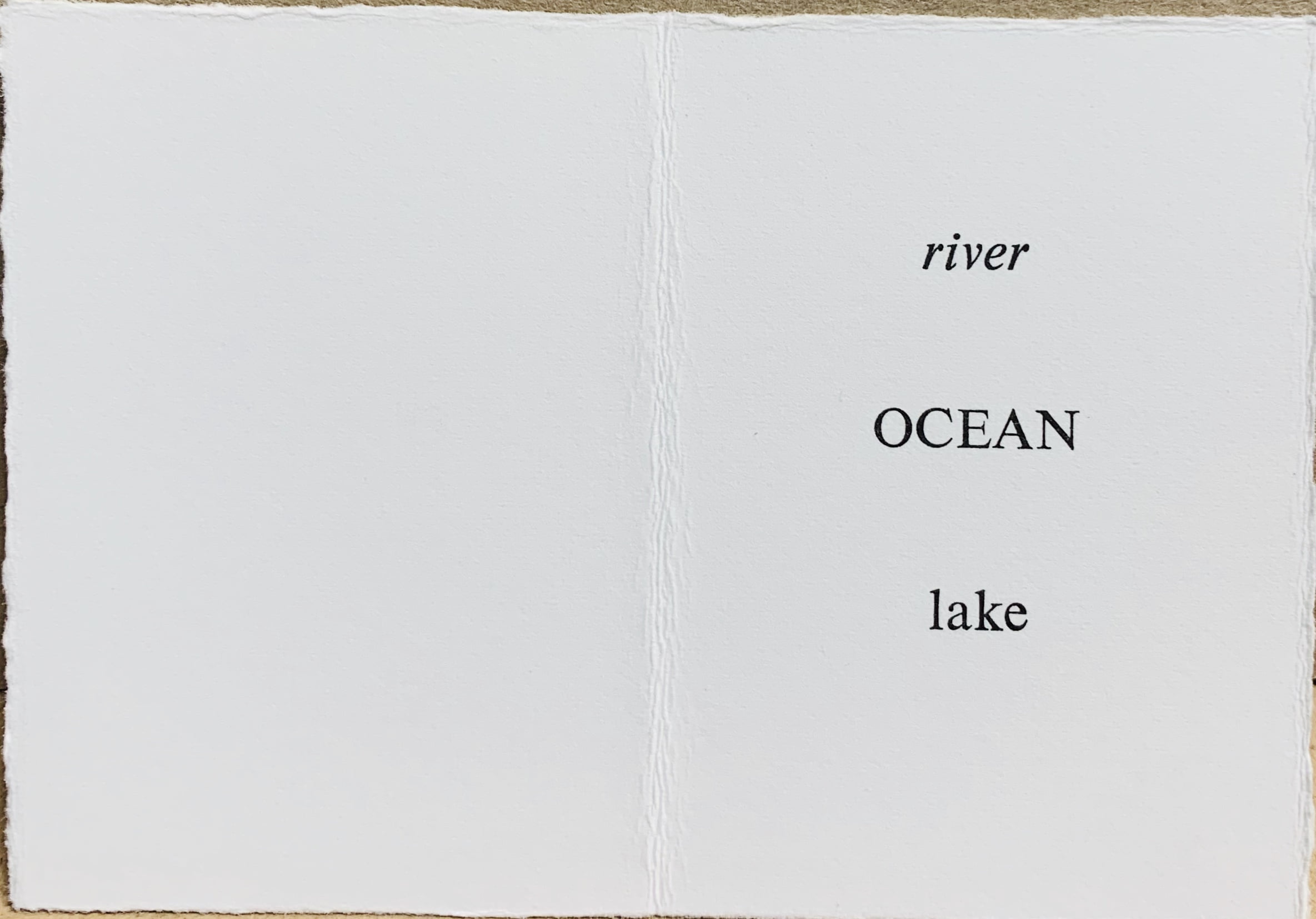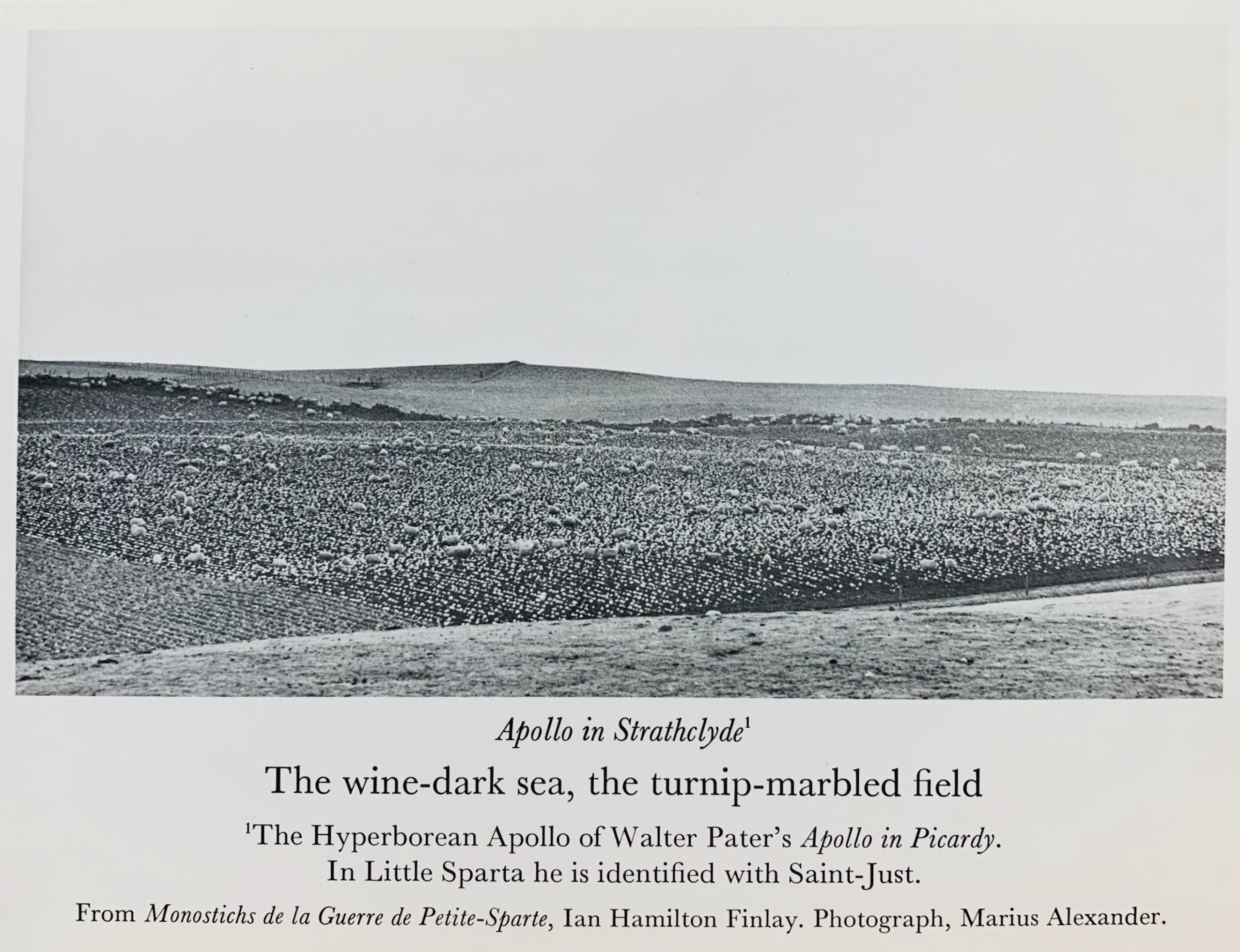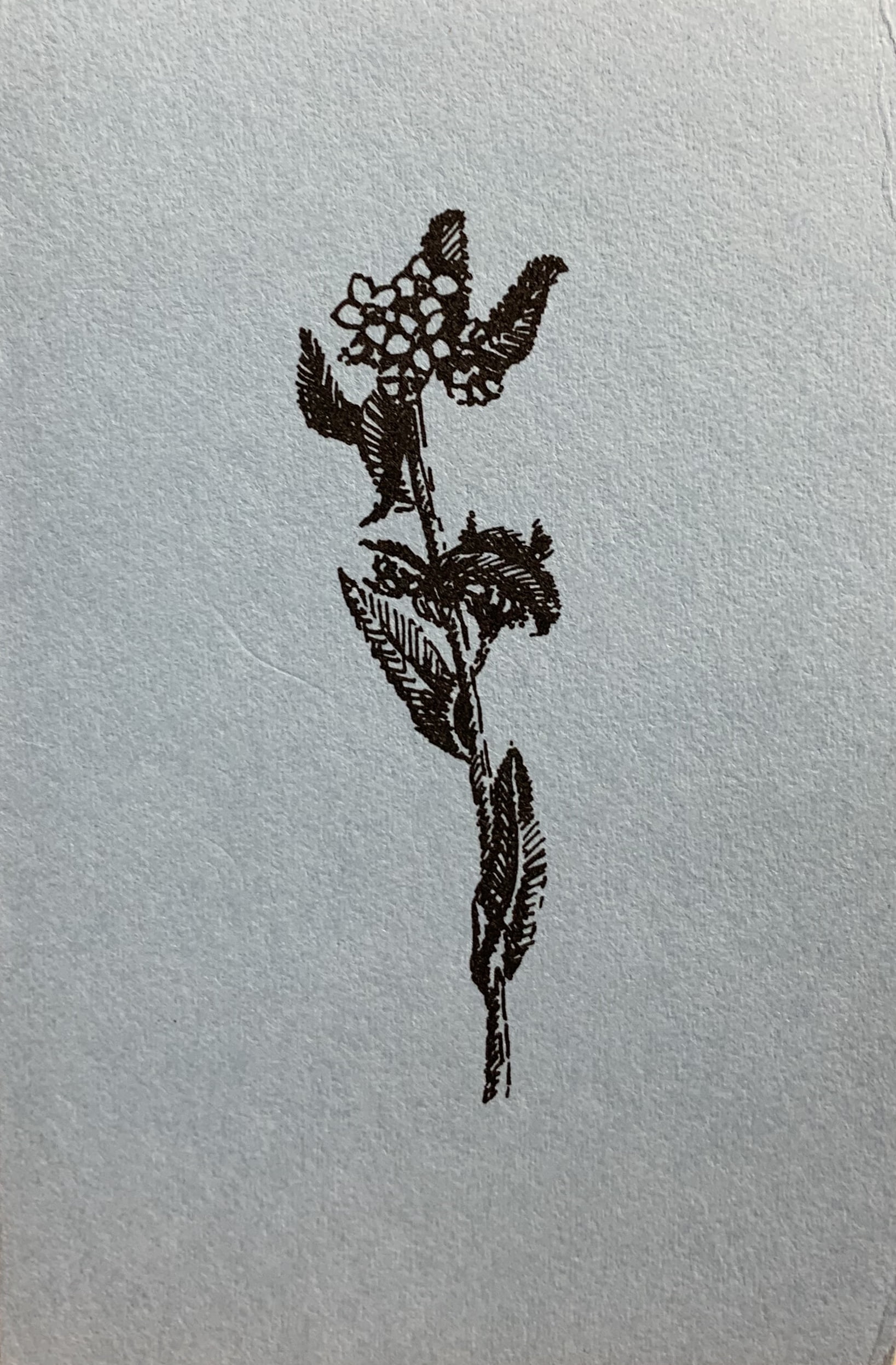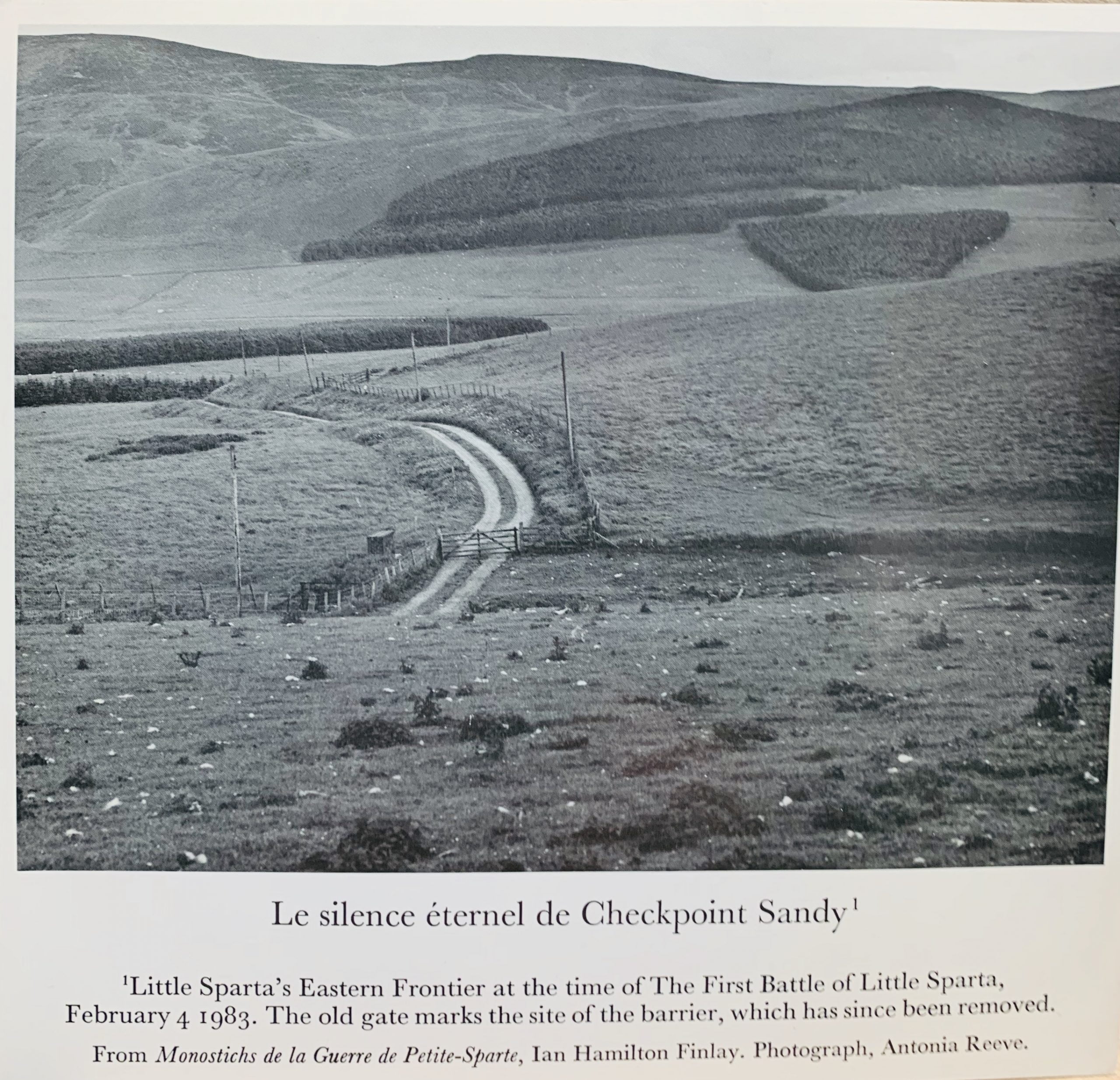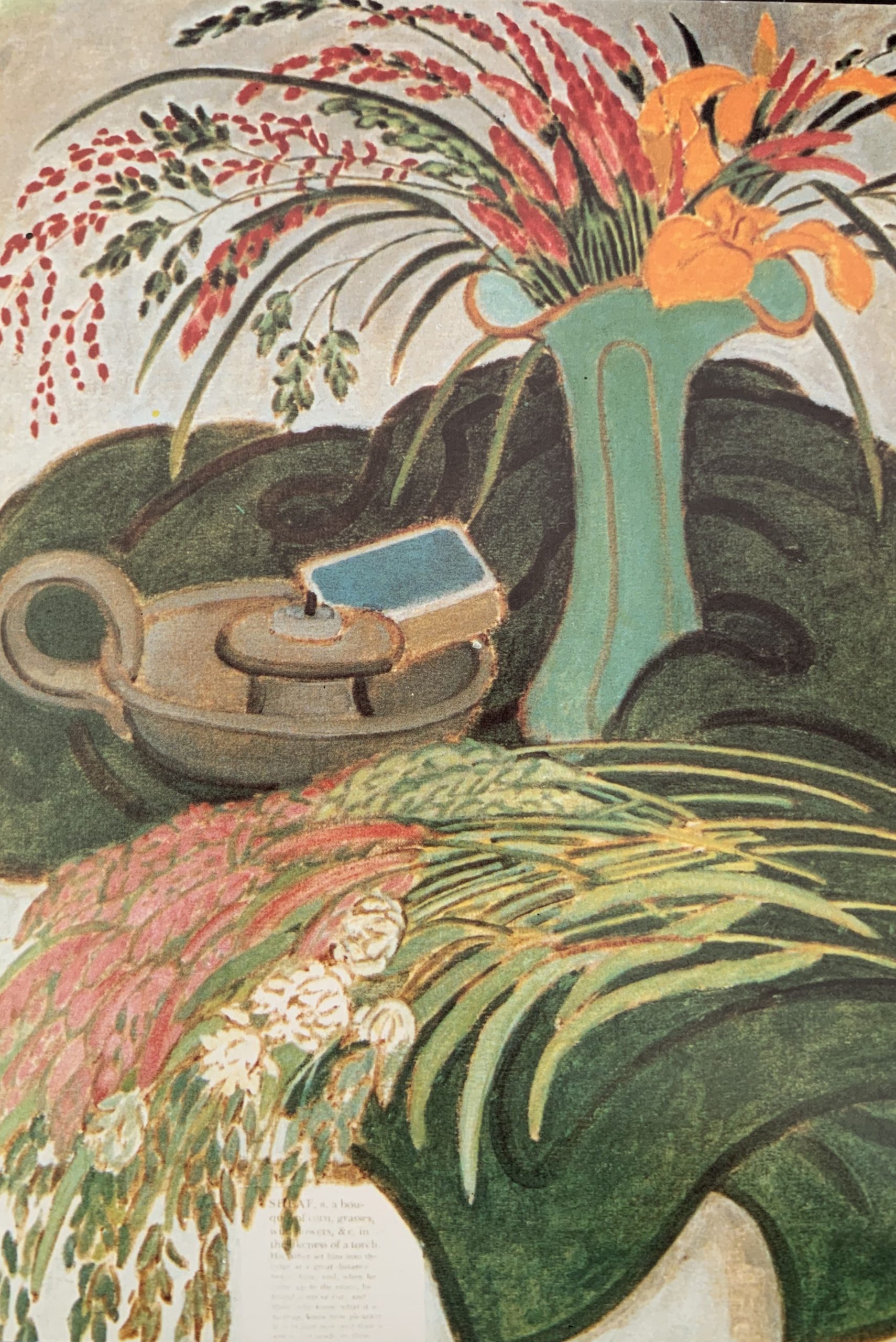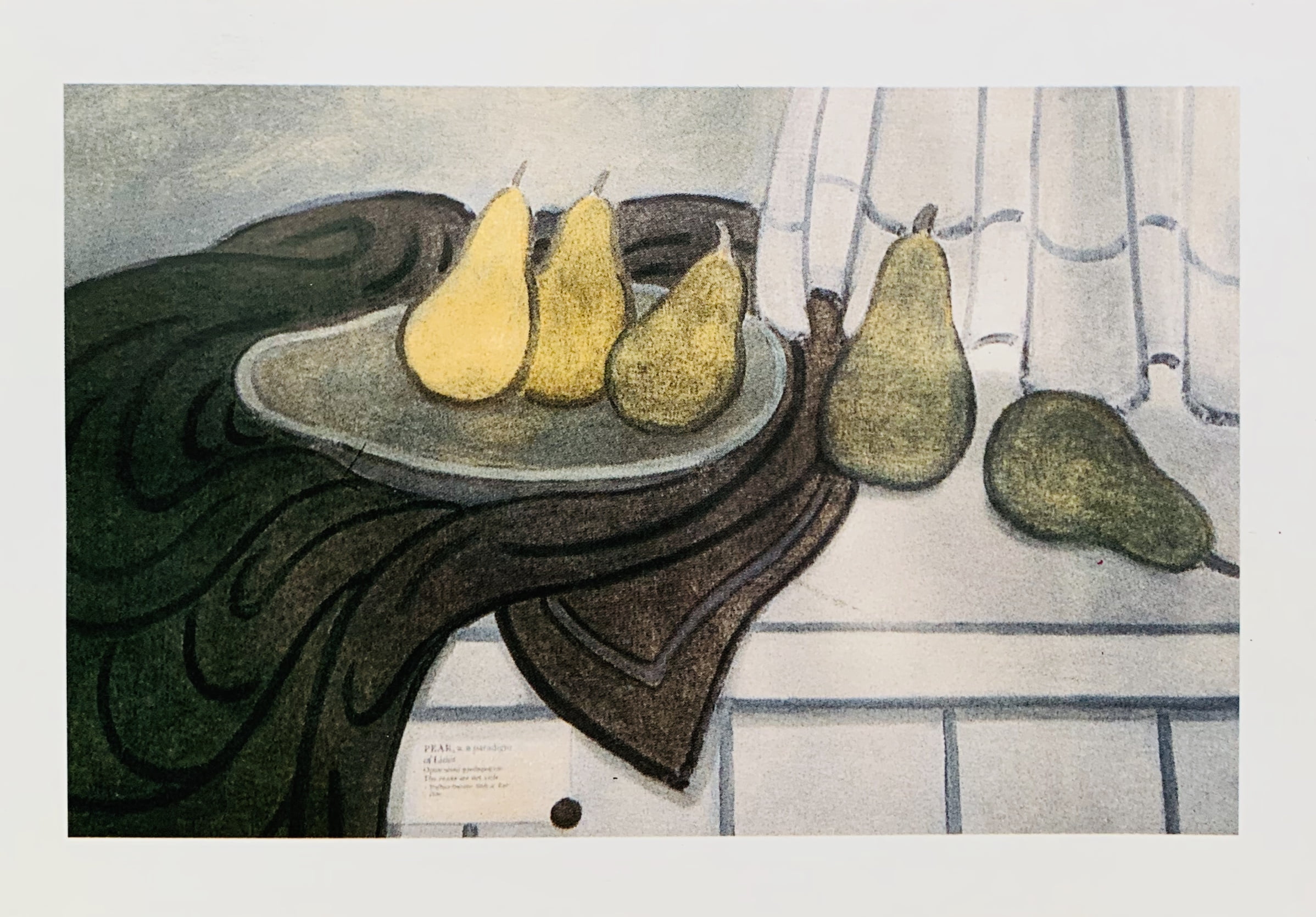Posted at 13:35h
in
Artist's Postcards
N.p. (Glasgow?): n.p. (Hughson Gallery), 1986
15 x 10.5cm, 2pp. Gallery issued postcard (who represented Margot Sandeman) with a reproduction of a painting by the artist based on a poem / "definition work" by her friend, and oft collaborator, Finlay. Each of the 11 painted works had Finlay's original hand-typed poem glued onto the canvas and Finlay later signed all the works on the back of the canvass to given them the status of a work by himself as a collaborator. There were 11 such paintings made.
The definition here reads:
SHEAF, n. a bouquet of corn, grasses, wild flowers etc in the likeness of a torch.
These works were forgotten about until a visit to Sandeman by Paul Robertson in c. 2008 brought them to his notice. Sandeman agreed to exhibit the works at Robertson's gallery and to produce an artist's book together reproducing the works. However within a week of Robertson's visit Richard Demarco found out about the paintings via his assistant who had also visited Sandeman and Demarco went to the artist (who he had known for many years) and took the works away with him when he left. Robertson was not able to exhibit them or publish the book. They were later exhibited posthumously to Sandeman's sad death at Summerhall by Demarco - ironically at a time when Robertson was the visual arts curator for the building.
VG+ - an unknown artist's card presumably because it was not published with Finlay's knowledge. Very scarce.
...

